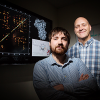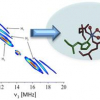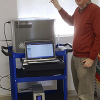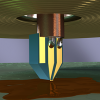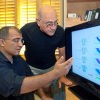Magnetic Resonance News
Fake or low-quality medicines and food supplements are a continuing global problem in developing nations, and indeed the developed world is not immune. A low-cost, portable prototype using nuclear quadrupole resonance spectroscopy can detect tainted medicines and food supplements.
Searching for the precise, complexly folded three-dimensional structure of a protein can be a long, intensive process with uncertain direction. A technique based on nuclear magnetic resonance spectroscopy offers a solution.
Dr Rene Lenggenhager has been appointed President of the Bruker BioSpin Group. He has extensive management experience in international high-tech companies and in the scientific instruments industry.
Bruker has announced five orders for ultra-high field (UHF) nuclear magnetic resonance (NMR) spectroscopy systems from Europe and Brazil in recent months. These UHF systems have been funded for cutting-edge NMR research in structural biology, intrinsically disordered proteins (IDPs), membrane proteins, macro-molecular complexes and interactions, cell biology, disease research, as well as in advanced materials research. Bruker defines UHF as NMR systems with 1H proton frequency of 900 MHz or above.
A new electron paramagnetic resonance (EPR) spectroscopy method is bringing researchers at Rensselaer Polytechnic Institute (RPI) closer to understanding—and artificially replicating—the solar water-splitting reaction at the heart of photosynthetic energy production.
Magritek’s Spinsolve Benchtop NMR spectrometer is being used in the Chemistry Department of the University of Queensland as part of the undergraduate laboratory curricula.
NIST has made electron spin resonance useful for exploring tiny objects for the first time, potentially enabling the decades-old technique to spot defects on computer chip surfaces or view the workings of proteins on the surface of cells.
Understanding the extremely fast atomic mechanisms at work when a protein transitions from one shape to another has been an elusive scientific goal for years, but an essential one for elucidating the full range of protein function. How do proteins transition between distinct shapes without unfolding in the process? Until now, this question has been a hypothetical one, approached by computation only rather than experimentation.
Jeol have introduced the latest version of their Delta NMR software, which is used to power their ECX and ECA series NMR systems.

